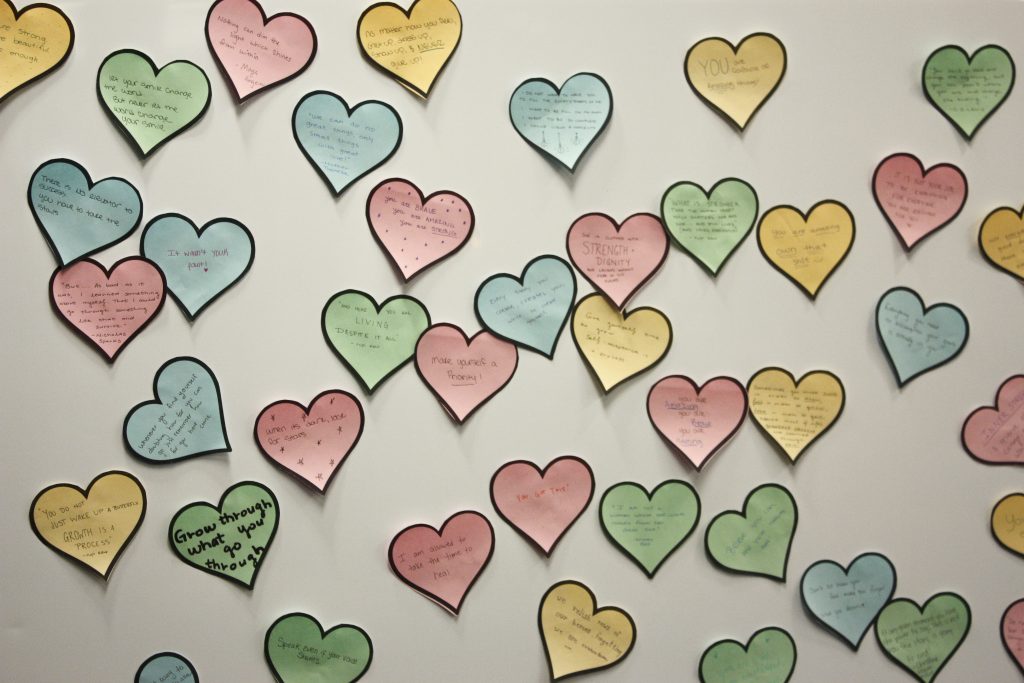
Sage Kiernan-Sherrow | News Editor
Taking place at the tail-end of Domestic Violence Awareness Month, Take Back the Night was hosted by Abby’s House on Oct. 26. Take Back the Night originated in the ‘70s after a cumulation of incidents, most predominantly, the nighttime murder of Susan Alexander Speeth. Today, Take Back the Night is usually organized as a march against sexual violence and violence against women.
This year, Abby’s House invited Jackie Sandmeyer to speak at the event. Sandmeyer is the founder of TIX Education Specialists, an organization dedicated to working with universities, law enforcement, prosecutors and community-based service providers to identify and create some of the nation’s leading models in Title Nine and student victims’ services.
Western’s Take Back the Night began with time to reflect; a chime sounded off every nine seconds, representing the frequency someone is beaten in the United States. Students were encouraged to walk around and reflect on their own experiences, as well as observe comforting messages written on sticky notes throughout the room.
Afterwards, Sandmeyer began by asking students to participate during their presentation.
“I’m going to ask you today, not to sit here quietly … I find it interesting that we broach a topic that we feel uncomfortable talking about and then we hope that the bravest among us who have experienced the worst among us break that silence,” said Sandmeyer.
Throughout the presentation, Sandmeyer urged the audience to question themselves. Too often, Sandmeyer said, does dialogue end after the victim or survivor has told their story. Sandmeyer would rather everyone reflect on their own accountability as perpetrators, survivors, listeners and bystanders. Sandmeyer also acknowledged their own tendency for violence. After having spent much of their adolescence on the streets, they said that everyday they reflect on “if (they are) doing (their) part to, one, acknowledge that (they) are capable of that, and two, make a different choice.”
When it comes to discussing violence, Sandmeyer admits that their advocacy makes strategic use of more palatable narratives — predominantly the stories of white women — to initiate change and get people to listen. Of course, that leaves many identities out of the conversation.
“If we acknowledge that violence is about power and control, what we know about people who experience violence comes down to we place different values on different people’s bodies,” said Sandmeyer.
While it is a well-known statistic that one in five women are assaulted, those numbers steadily increase for minority populations, and don’t include the statistics for other genders. However, Sandmeyer believes that relying on these statistics to initiate conversation can be problematic because “we assign really dehumanizing rates to people who experience violence,” rather than focusing on their successes. They said that, “the more (they) tell college students (statistics), the less people get shocked … we’ve normalized this to a certain point.”
Equally normalized are the ‘accepted’’ and misleading narratives surrounding violence — such as the narrative that it is always committed by a stranger. Breaking free from those confining stereotypes requires talking about consent.
“Are we having conversations with our partners, our friends, our families, our communities about sex, consent, pleasure, autonomy, agency and so on,” challenged Sandmeyer.
Although much of the discussion was in regards to proactive dialogue, Sandmeyer finished their presentation by urging the audience to “hold space, compassion, and love for people who choose to remain silent … resilience is not linear and it does not always look the same way … not only is there a certain way that we expect victims to look, but there is a certain way that we expect them to heal.”
This was an affirmation before the speak-out portion of the event, in which the audience members were invited to tell their stories. Later, during the candlelit march on campus, students reflected on a question posed by Sandmeyer earlier that night: “we’ve heard their stories, now what will implementing change look like?”
Contact the author at howlnews@wou.edu
Photo by Sage Kiernan-Sherrow

